Using the painting, Cakes by artist Wayne Thiebaud, students will practice fractions, addition, subtraction, word and money problems, sorting, and classifying. Then they will create a bold cake painting, either online or with classroom art materials.

Language
Materials
- Smart Board or computer with ability to project image of Thiebaud’s Cakes
- Art paper
- Pencils
- Markers or poster paint
- Brushes
- Copies of the “Take the Cake!” and “Delicious Diagrams” worksheets
Warm-Up Questions
Have you ever seen a scene like this? What seems unusual about it? (Note the thin, delicate stands—almost like a circus performer balancing plates on a straw!)
Background
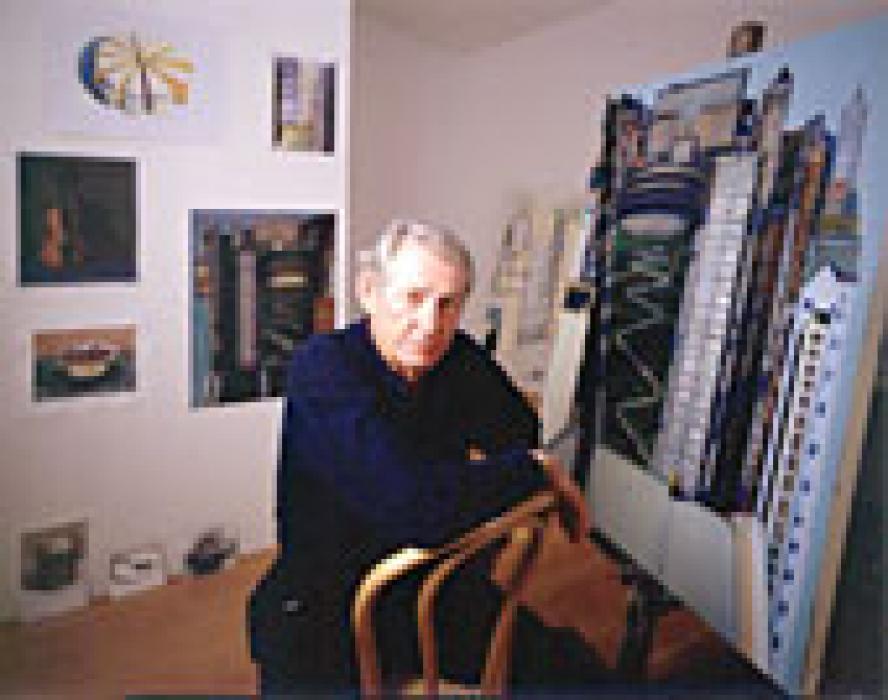
Wayne Thiebaud, c. 1985–1986
©Wayne Thiebaud/Licensed by VAGA, New York, NY
Ten Things About Thiebaud:
- Wayne Thiebaud was born in 1920 in Mesa, Arizona. He moved with his family to Long Beach, California, at age nine.
- Thiebaud grew up during the Great Depression. He was a boy scout and worked in restaurants.
- In high school, he played basketball. He took art classes and started drawing cartoons. He also worked on stage sets for theater productions. Perhaps this experience with stage lighting gave him the idea to put bright light in his paintings.
- As a teenager Thiebaud held several jobs, making posters for a movie theater and painting signs. One summer Thiebaud worked in the animation department at Walt Disney Studios. He drew the "in-between frames" (drawings positioned between key changes in movement in order to make animation play smooth) for such cartoons as Goofy and Pinocchio.
- In the 1940s, Thiebaud went to junior college and then served in the Army as an artist and cartoonist. He married and settled in Los Angeles and worked as a commercial artist and illustrator. At age twenty-nine he went back to college and received degrees in art, art history, and education. He began teaching art to college students and decided to become a serious painter himself.
- In 1961, Thiebaud's food paintings—images of cakes, pies, candy, gumball machines, and deli counters painted with thick paint in bright colors—were exhibited in New York. They were a big hit! Though some scholars called Thiebaud a Pop artist because he painted popular consumer goods, he said he painted them out of nostalgia; they reminded him of his boyhood and the best of America.
- Thiebaud explained:
"My subject matter was a genuine sort of experience that came out of my life, particularly the American world in which I was privileged to be . . . . I would really think of the bakery counters, of the way the counter was lit, where the pies were placed, but I wanted just a piece of the experience. From when I worked in restaurants . . . [it was] always poetic to me."
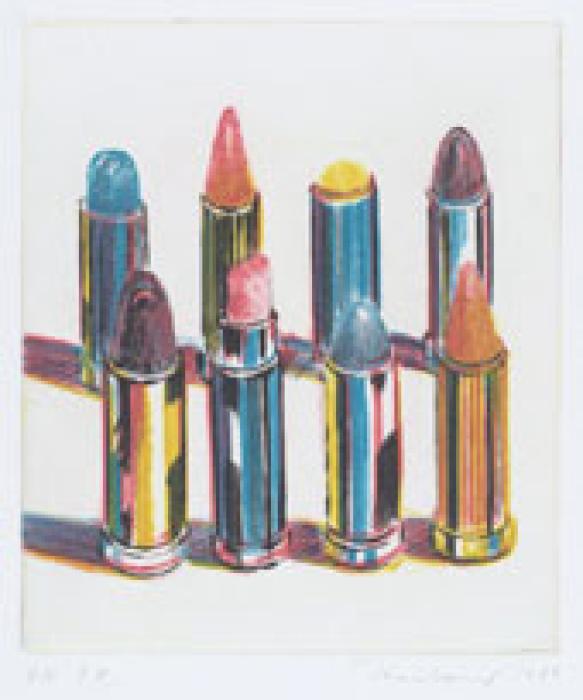
Wayne Thiebaud
American, born 1920
Eight Lipsticks, 1988
drypoint on Somerset Satin paper, 17.8 x 15.2 cm (7 x 6 in.)
National Gallery of Art, Gift of Kathan Brown
8. Thiebaud painted things other than food. He made still lifes of neckties, eyeglasses, lipsticks, even cows and dogs. He also painted large portraits of human figures, applying thick paint in bright colors against stark white backgrounds.
9. Thiebaud went on to paint cityscapes—from the steep hills of San Francisco to the colorful landscapes of the Sacramento Valley in California.
10. Wayne Thiebaud retired from full-time teaching in 1990. He lives in Northern California and continues to paint.
Guided Practice
Begin by looking carefully at the painting Cakes by Wayne Thiebaud with your students. Display a copy of the painting and ask students:
- What do you see? Describe the cakes.
- Where are these cakes? How are they displayed?
- How is the painting lit? How can you tell?
- What is the painting about? What is happening?
- What is the mood here? Why do you say that?
Read the facts “Ten Things About Thiebaud” at the very beginning of the lesson and ask students what they learned about the artist that might help explain his painting.
How hungry are you? Unless you are really hungry (and can eat the whole thing!), a cake is usually cut into equal pieces—or fractions—of the whole when it is served. Thiebaud gives us lots of clues on how to cut his cakes.
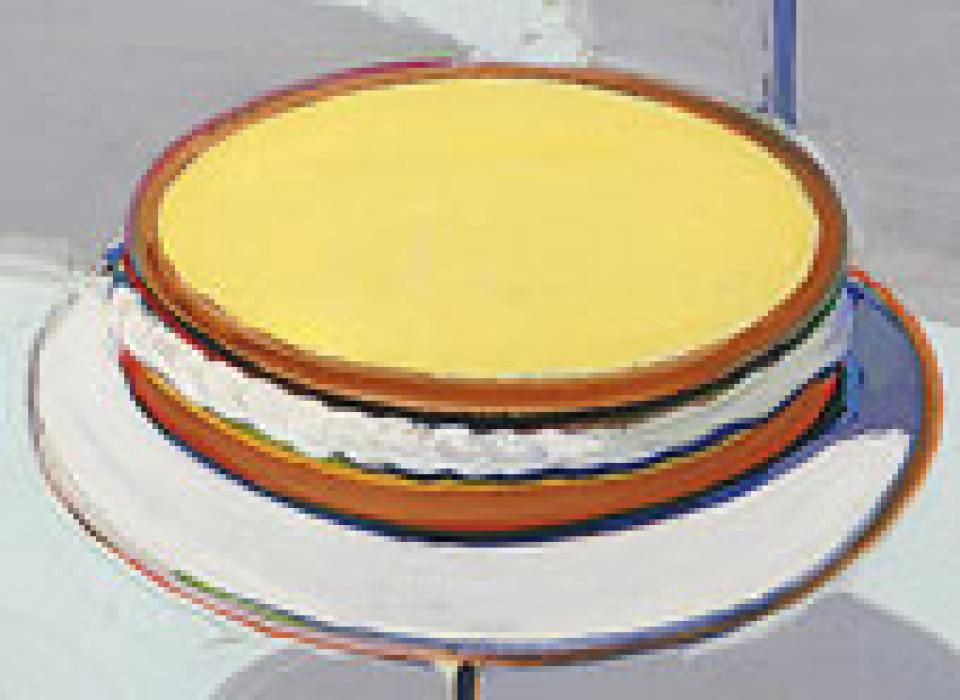
The Boston Cream Pie is the low one with a creamy white filling; it looks more like a pie than a cake. Imagine how this cake looked before the filling was put between the layers.
This cake is divided into two layers. Each layer represents one half (1/2) of the total cake. The whole cake consists of two halves (2/2). What does 2/2 equal?
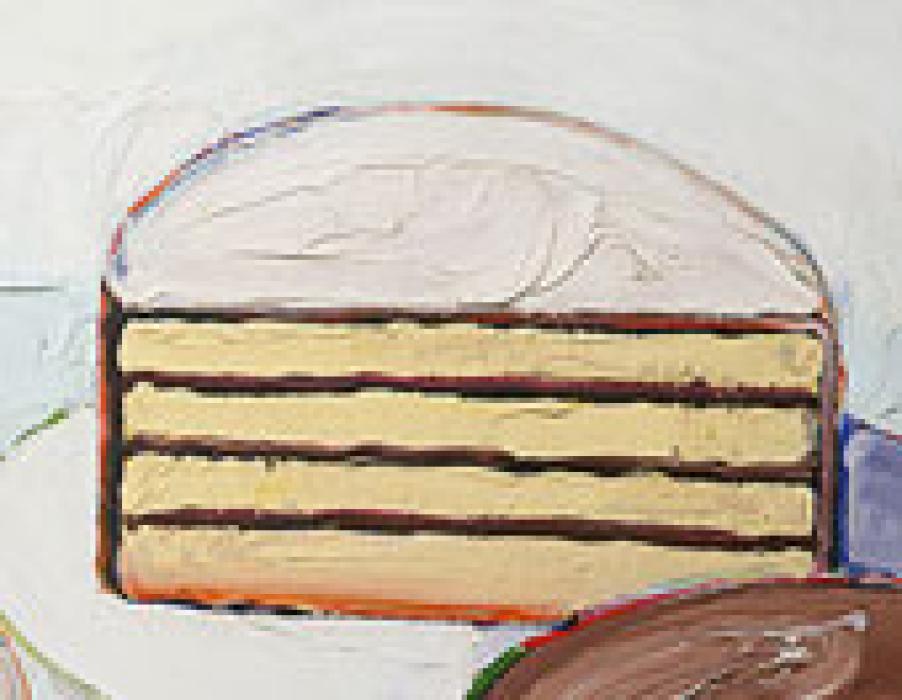
Now look at this layer cake (pictured right):
- Which fraction or fractions represent this cake? (1/2)
- How many layers does this cake consist of? (4)
- Each layer represents a fractional part of the cake.
What fractional part of the half-cake does each layer equal? (1/4)
Return to looking at all the cakes: Which cakes have layers or section marks that show fractions?
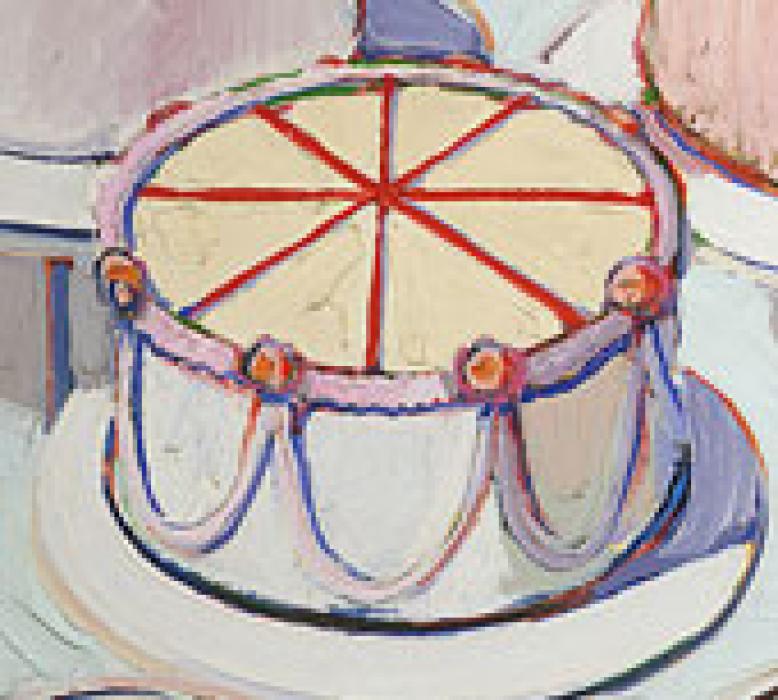
Notice the first cake on the left in the middle row: What fraction represents one section of this cake? (1/8)
Now, look at the cakes in the back row. Assume all are four-layer cakes with the same diameter. Which of the choices below is the smallest piece of cake?

- 1/4 of the Valentine cake
- 2/8 of the "red dot candy" cake
- 2/16 of the spiral-spoke cake (correct answer)
- 1/2 of the half-cake
By secret ballot (so that they don't influence each other), have each student choose the cake s/he would like most to take home for dinner. Tell them their description of the cake must be very clear.
Collect the ballots. Ask for two volunteers to sort the ballots by cake type and to count the number for each type. On a large sheet of chart paper, make a graph like the one below using the students’ descriptions:
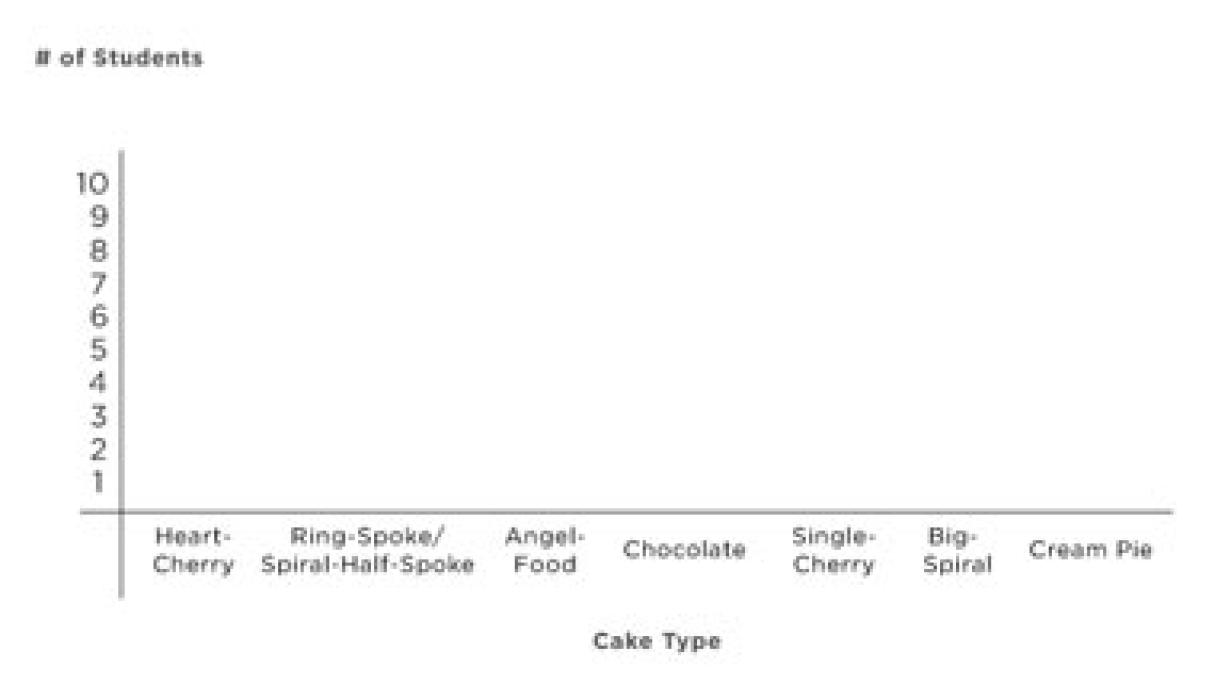
Draw in a bar above each cake type, indicating how many students selected it. Then ask students:
- Which cake was the take-home favorite?
- Which was the least popular?
- Any ties?
Activity
Now that students are familiar with the painting, have them make their own boldy-designed cake paintings. What type of cake do they like? What shape is their cake? round? rectangular? another shape? What colors are used for this type of cake? How would they decorate it?
Extension
Continue the connections between math and art with these worksheets:
- “Take the Cake!”: Students solve logic and money problems based on Wayne Thiebaud's Cakes.
- “Delicious Diagrams”: Using Venn diagrams and a set of rules, students sort Wayne Thiebaud's Cakes.
National Core Arts Standards
VA:Cr1.1.3 Elaborate on an imaginative idea.
VA:Re1.2.2 Make art or design with various materials and tools to explore personal interests, questions, and curiosity.
VA:Re7.2.3 Determine messages communicated by an image.
VA:Re8.1.2 Interpret art by identifying the mood suggested by a work of art and describing relevant subject matter and characteristics of form.
You may also like

Educational Resource: Horace Pippin's Story, Grade Level: 1–2
Students will learn about the life and painting style of African-American artist Horace Pippin. They will discover how to "read" the clues in his painting School Studies and write a story about the work. By solving counting and time problems, students will also create their own "secret number" painting.




